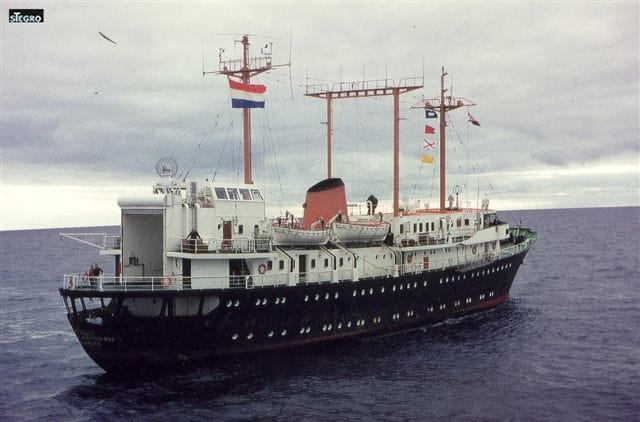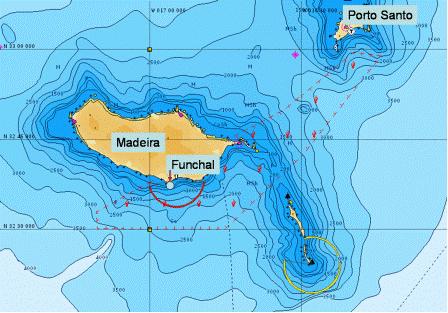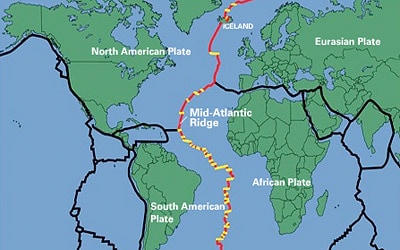Yesterday morning the Oosterdam was the first ship to enter the port of Malaga and last night she was the last one leaving, at least of the three HAL ships. Then it was pedal to the metal to maintain the schedule for Funchal. The weather forecast for the Mediterranean between Malaga and Gibraltar was spot on, but once in the Ocean there was more wind and swell than initially forecast. Sometimes I have the impression that forecasters fine tune their forecasts by looking out of the window. Something that does not work for the Open Ocean.

The Dutch weather observation ship ms Cumulus. No stabilizers, not nice in the winter. (Photo courtesy Stegro publishers)
In the old days when there were weather ships, you still had a window or a view from the bridge, but those ships are long gone. With that I mean stationary ships, moving explorations ships such as the NOAA has and most navies are still out there in abundance. When I was at the Maritime Academy between 1976 and 1979 I met officers who did contracts on the Dutch weather ship the ms Cumulus and that happened on a sort of a one by one loan basis from the Merchant Navy. The ship was of course parked where the worst North Atlantic weather could be expected and thus there was little interest for a 2nd contract unless it was in the summer. The ship did very valuable work and I remember my first captain contacting them directly to ask for the weather in the area. No doubt they provided the answer by looking out of the (bridge) window.

The island of Madeira and the smaller Savage islands to the S.E. The darker the water, the shallower it is.
Now the ms Oosterdam is on the way to Funchal on Madeira, which is the largest island of the Madeiran Archipelago. The other islands known as the Savage Islands are very small and the preponderance of the population lives on the main island. The island is a bit to the south of the latitude of the Straits of Gibraltar and thus we are steering a SW course of 249o. Which is always good. The further to the south the less waves there tend to be. There lays a frontal system over the Azores (as it does very often) and that is sustaining a swell coming from the north hand which is just touching the 3 meters or 9-10 feet. It is hitting us under an angle and as a result the Oosterdam is not pitching or rolling; it does both but not consistently. Thus we have a bit of a strange movement. The Azores are about 1200 miles to the North West and thus we are very happy that we are not there today.

The North Atlantic Ridge and the boundaries of the most important Tectonic plates. (Somewhere off the internet, could not trace the maker)
The islands are all the tops of Volcano’s which were created by mountains ridges rising very sharply several thousand feet from the sea floor. Thus when we left the Straits of Gibraltar behind, we fell off the Continental Shelf and are now sailing over very deep water. That will remain so until about 2 am. tomorrow morning when we approach the ridge running S.E. of the islands and then it gets shallow quite quickly. Shallow in relative speak, it will still be several hundred feet but with an average depth of several thousand feet it can be considered shallow. Then it does down again to very deep water until we arrive at the pilot station where Madeira itself rises up from the depth.
All these rises and depths (Madeira, Azores, Cape Verdes) are all the results of cracks in the earths crust. The major one is the North Atlantic ridge where the European Tectonic plates (the Eurasian and African plate) are being shoved under the North American plate. Madeira is sitting on the border of the Eurasian and the African plate) where the Earths crust is breaking or cracking up, there are normally fireworks to be seen when that happens but on Madeira things are very quiet. The island itself is a shield volcano, which means the island is part of a Volcano rim. But as it is a big rim, there a numerous small volcano cones near the highest points of the island. They are all dormant and the city of Funchal has been built all over them. As the chance of seeing the island being blown up by volcanic activity is fairly remote, and Funchal is the most important cruise port of Portugal to which country Madeira belongs. It is situated ideally for trans-atlantic crossings but as it is only one sea day sailing away from the European shores it is also for that reason a nice port to go to, when on a 10 day cruise or longer from a Continental home port.
The plan is to have the pilot on board at 06.00 hrs. tomorrow morning and to be docked before 07.00 hrs. We will stay until 15.00 hrs. and then set sail for Tampa Florida. Madeira has a very temperate climate and tomorrow it will be on the low side of temperate with temperatures of 57oF or 14 oC.

Leave a Reply